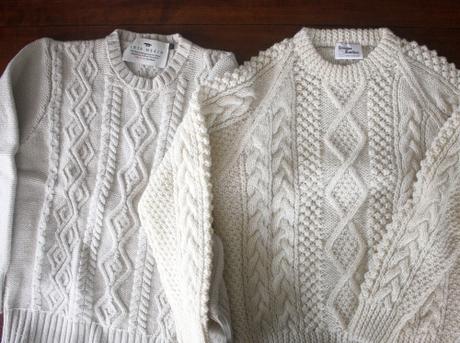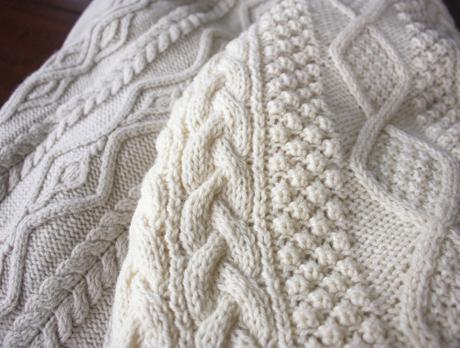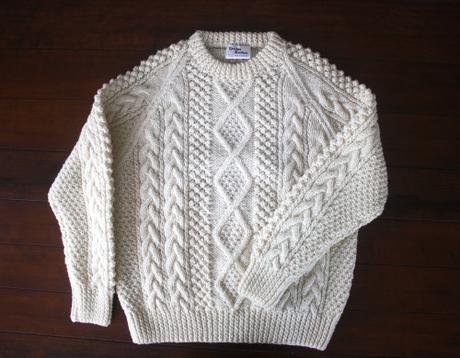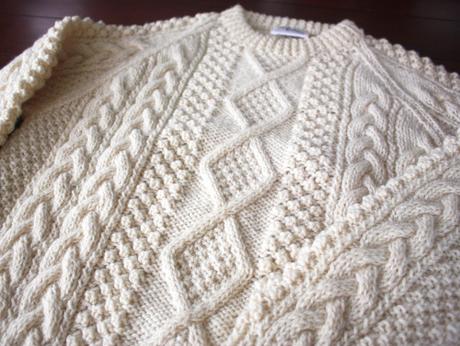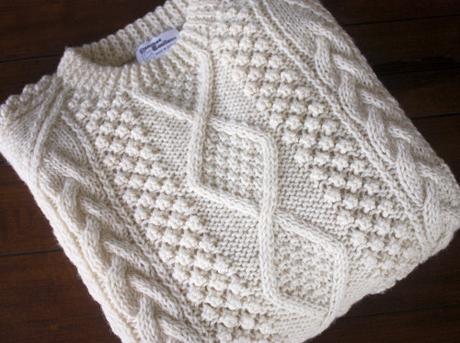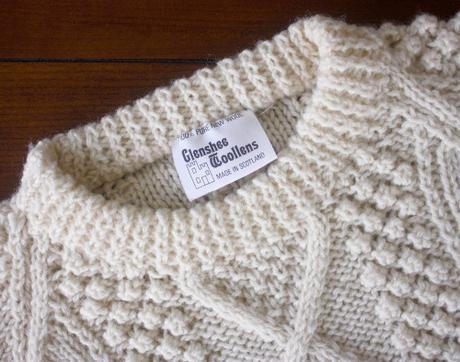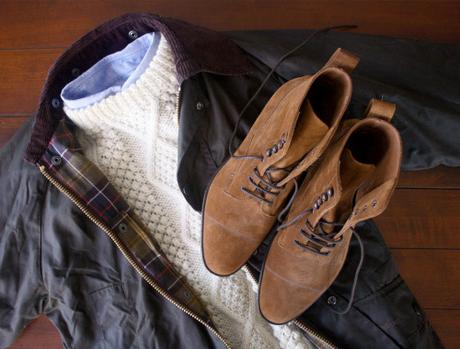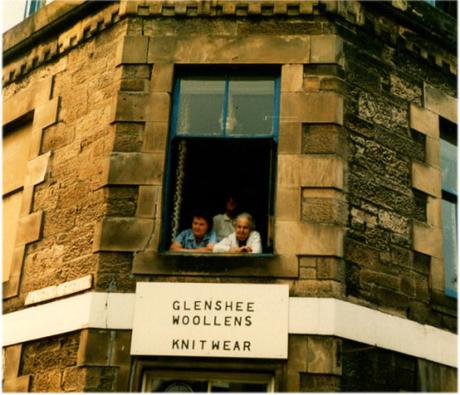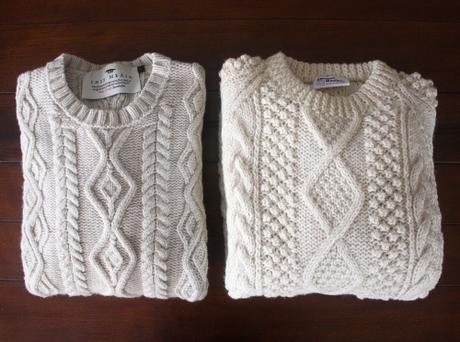
Anyone who’s ever been to a small, traditional American clothier knows – places such as Cable Car Clothiers and The Andover Shop are treasure troves for new-old stock clothes. Unlined button-down collar shirts, bleeding madras jackets, vintage outerwear, and piles and piles of scratchy sweaters. Mostly things from the ‘60s, ‘70s, and ‘80s, when things were made with the kind of qualities trad enthusiasts like to gush about today.
I recently picked up this deadstock Aran sweater from O’Connell’s, who sells a ton of new-old-stock clothes online (although, they have even more in-store, if you’re able to stop by Buffalo, New York). It’s thick, heavy, and beautifully textured. The inside label reads “Glenshee Woollens,” which is apparently now defunct. The one photo of them I could find online, shown at the end of this post, charmingly shows two old ladies peering out of the company’s window.
Generally speaking, there are three ways to make an Aran sweater:
- Hand Knit: What you think of when you hear “handmade,” even though not all sweaters marketed as handmade are indeed hand knitted. Here, a knitter juggles two knitting needles in order to create a set of intricate stitches (some of which machines may not be able to handle). The result are sweaters that are more textured and tightly knitted than their machine-made counterparts, although they also tend to be more expensive. Today, the work is mostly done by a few hundred elderly women in Scotland and Ireland, who knit sweaters at home for part-time pay.
- Hand Loom: A sweater made on a single-operator loom, where the operator can adjust the stitching pattern between rows. The best hand loomed sweaters are said to compare well to hand knitted ones, although they’re not as tightly knit. The upside: there’s less labor involved, so the resulting sweaters are a bit more affordable, and since they don’t require the complicate set-up of automatic machines, you can get custom one-offs.
- Automatic Machines: The most variable in quality, as you can find everything from ~$80 Shetland sweaters to luxurious $750+ cashmere pieces from the likes of Luciano Barbera. The difference is mostly in the quality of the yarns, density of the knitting, and if there’s any hand finishing. My Inis Meain Aran, shown on the left in these photos, was made on an automatic machine, but knitted from top-end merino-cashmere yarns and then hand linked at the seams point-by-point. Still, generally speaking, automatic machine knits will be flatter and less textured than handmade sweaters – whether hand knitted or hand loomed – as you can see here.
My guess is that the Glenshee Woollens sweater was hand loomed, given the intricacy of the pattern, heavy texture, and the bit of spacing between some of the stitches. I’ve been enjoying it so much with Barbour jackets and moleskin trousers that I’ve been thinking about getting one of the hand knitted sweaters from Aran Sweater Market or O’Maille. With knitters retiring every year, and few people taking their place, you never know when these might only be available deadstock.
